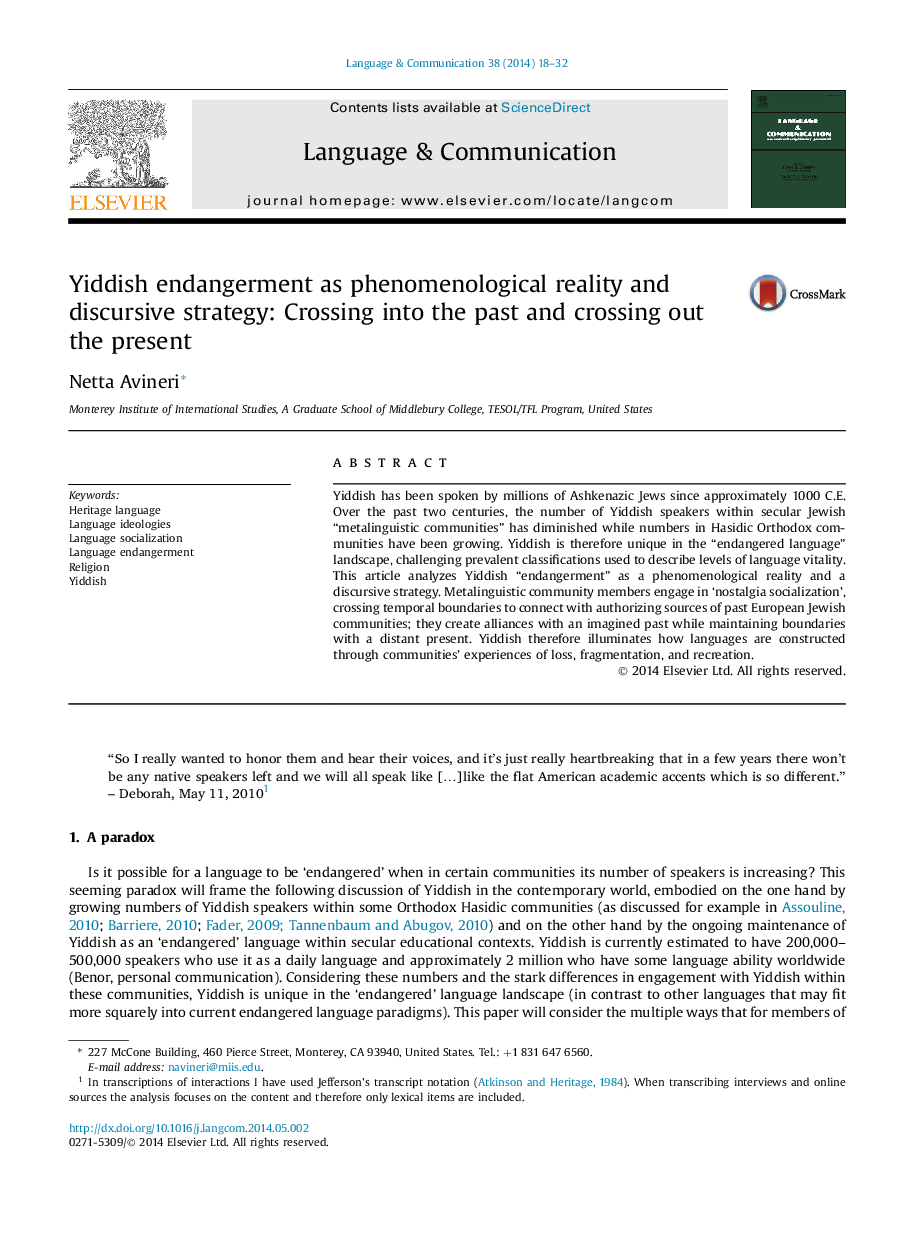| Article ID | Journal | Published Year | Pages | File Type |
|---|---|---|---|---|
| 935182 | Language & Communication | 2014 | 15 Pages |
•Language vitality and endangerment are relational phenomena.•Participants consistently create and cross temporal borders and spatial boundaries.•Yiddish's endangered status is a phenomenological reality and a discursive strategy.•Metalinguistic community members focus primarily on talk about Yiddish language and culture.•Participants in secular contexts engage in a number of nostalgia socialization practices.
Yiddish has been spoken by millions of Ashkenazic Jews since approximately 1000 C.E. Over the past two centuries, the number of Yiddish speakers within secular Jewish “metalinguistic communities” has diminished while numbers in Hasidic Orthodox communities have been growing. Yiddish is therefore unique in the “endangered language” landscape, challenging prevalent classifications used to describe levels of language vitality. This article analyzes Yiddish “endangerment” as a phenomenological reality and a discursive strategy. Metalinguistic community members engage in ‘nostalgia socialization’, crossing temporal boundaries to connect with authorizing sources of past European Jewish communities; they create alliances with an imagined past while maintaining boundaries with a distant present. Yiddish therefore illuminates how languages are constructed through communities' experiences of loss, fragmentation, and recreation.
